Journalist Report – February 21th
Sol 9 – Aluminum foil and zip ties are an astronaut’s best friends
“The rain fell. The great black lid of sky cracked in six powdery blue chips, like a marvelous crackled glaze, and rushed down. He saw ten billion rain crystals, hesitating long enough to be photographed by the electrical display. Then darkness and water.”
– – Chapter 9 of The Martian Chronicles by Ray Bradbury
If not a green morning, let us have a red one! The colors of the sky over the Martian hills were especially beautiful when we awoke and started our day. Our upper body muscles being sore from Sol 7, Corentin had prepared a leg workout for us to do in the Lower Deck. The objective of this morning’s EVA was to perform more tests and retrieve the MegaAres antenna, as well as placing the last atmospheric physics experiment, the LOAC (Light Optical Aerosol Counter). Everything went very smoothly: the situation with MegaAres wasn’t as bad as we initially thought, and Alexandre has already found a solution to fix the conductivity problem using aluminum foil. After deploying the aerosol counter, we had some time left to briefly explore the area and take some pictures. I feel like I am gradually getting used to moving around in my spacesuit and using tools during EVAs; we know which movements can be impeded, what communications problems can arise and how to solve these problems effectively.
After we returned, we noticed a change in the Hab. Something was off, the Hab was unusually noisy. We quickly realized it was the wind blowing and whistling around the Hab, carrying with it heavy cloud coverage. Alexandre started constantly checking the weather station, afraid the humidity levels would rise, effectively damaging the newly installed LOAC. Today’s quote, taken from the chapter titled “The Green Morning”, in which the protagonist witnesses heavy rainfall followed by the overnight sprouting of a thousand trees, is Alexandre’s greatest nightmare…
Today, we also started taking the cognitive assessment tests as part of the KTHitecture experiment. All crew members are given a series of psychometric tasks designed to see how our concentration, cognition and performance evolve during the mission and are affected by the different environments of the station: this is why you might see us taking the test in places such as the Science Dome, the Hab, and even the GreenHab. Alice and Quentin also prepared Corentin and I for tomorrow’s photogrammetry experiment: we were given a 2D map of North Ridge and a scenario to contextualize the exploration EVA, both of which we had one hour to study.
As the evening progressed, the wind started blowing harder and harder, to a point where we had to secure the corridor tarps and both airlocks to make sure they didn’t get blown away. Mars has hit Crew 275 with everything it had: snowfall, a penetrating cold that nearly got the best of our heating and alarm systems, and high-speed winds. Everything, except for rain… at least, not until now.
EVA Report – February 21th
Crew 275 EVA Report 21-02-2023
EVA # 7
Author: Alexandre VINAS (crew astronomer and EVA leader)
Purpose of EVA: Installation of the LOAC instrument & Maintenance of the other atmospheric instruments
Start time: 9:00
End time: 10:41
Narrative:
9:01 EVA crew entered the airlock
9:27 Installation of the LOAC. To be launched, the LOAC just requires to be connected to a battery and to be turned on. This was successfully done.
10:16 Removal of a part of the MegaAres antenna for maintenance. The spheric part of the antenna had to be removed very carefully to not damage the rest of the mast. It was a success as well.
10:29 Removal of the upper mast of the weather station. A piece of tape had to be removed to take the upper mast away carefully. All the purposes of the EVA have been accomplished.
10:34 EVA crew back in the MDRS with the material to be fixed.
10:41 End of the depressurization. EVA crew back to the Hab.
Destination: Between the Hab and Marble Ritual near the road.
Coordinates (use UTM WGS 84): N4251000 E518500
Participants: EVA leader : Alexandre Vinas (Crew Astronomer), Marie Delaroche (Crew Journalist), Corentin Senaux (HSO)
Road(s) and routes per MDRS Map: See attached file
Mode of travel: Walking
GreenHab Report – February 21th
GreenHab Officer: Adrien Tison
Environmental control: Heater
Average Temperature: 75.4 °F
Average humidity: 20 % (with our sensor near the walkie-talkie, the old sensor detects 7% there)
Hours of supplemental light: 4 hours
Daily water usage for crops: 10.46 gallons
Daily water usage for research and/or other purposes: 0 gallons
Water in the blue tank: 86.57 gallons
Time(s) of watering for crops: 9:10 & 15:00
Changes to crops: N/A
Narrative: This morning I was the habcom for today’s EVA, so I was not able to go in the GreenHab, but our crew scientist went to perform daily activities.
She watered and maintained crops and plants in the morning, and I went to check on it in the afternoon.
Our environmental sensors have been deployed, I was then able to double-check the humidity and indeed the old sensor underestimate the real value. I will now use the value given by our environmental sensors.
As advised, I unplugged the supplemental light, and I will watch if it doesn’t bother the plants.
Besides that, everything grows fast and well!
Harvest: N/A
Support/supplies needed: N/A
Operations Report – February 21th
Crew 275 Operations Report 21Feb2023
SOL: 9
Name of person filing report: Quentin Royer
Non-nominal systems:
• Toilet
Notes on non-nominal systems: None
ROVERS
Spirit rover used: No
• Hours: 209.1
• Beginning charge: 100%
• Ending charge: N/A
• Currently charging: Yes
Opportunity rover used: No
• Hours: 113.1
• Beginning charge: 100%
• Ending charge: N/A
• Currently charging: Yes
Curiosity rover used: No
• Hours: 221.0
• Beginning charge: 100%
• Ending charge: N/A
• Currently charging: Yes
Perseverance rover used: No
• Hours: 255.5
• Beginning charge: 100%
• Ending charge: N/A
• Currently charging: Yes
General notes on rovers: Nothing to report. The EVA Crew did not use them as they went less than 1 km away, with no heavy equipment.
Summary of Hab operations: The Crew conducted routine operations. The main Airlock door was blown open due to high winds. We then closed and secured it. The Engineering Airlock door is now also closed and secured, per Mission Support request.
• WATER USE: 12.36 gallons
• Water: 342.99 gallons
• Static tank pipe heater: On
• Static tank heater: On
• Toilet tank emptied: Yes
Summary of internet: Hughes Net was used during the day before the opening of COMMS for email purposes, and Starlink (MDRSCampus-Guest) is used during COMMS.
Summary of suits and radios: Nothing to report.
Summary of GreenHab operations: The Crew botanist conducted routine operations. He unplugged the supplemental light, per Shannon request.
• WATER USE: 10.46 gallons
• Heater: On
• Supplemental light: From 10:00 pm to 2:00 am
• Harvest: No
Summary of ScienceDome operations: The Crew Scientist conducted routine operations, and psychometric tests were conducted. Because of the high winds, the Crew Engineer secured the tarps outside the ScienceDome in the pressurized corridor with more zip ties.
• Dual split: Switched off during the night
Summary of RAM operations: No operations were conducted in the RAM today.
Summary of any observatory issues: Nothing to report.
Summary of health and safety issues: The main Airlock outside door was blown open because of the high winds. The crew closed it and secured it. The Engineering Airlock was subsequently closed and secured.
Questions, concerns, and requests to Mission Support: None.
Sol Summary Report – February 21th
Crew 275 Sol Summary Report 21Feb2023
Sol: 9
Summary Title: Aluminum foil and zip ties are an astronaut’s best friends
Author’s name: Jeremy Rabineau, Commander.
Mission Status: Nominal.
Sol Activity Summary:
Even if the food stocks are quickly decreasing, which makes the crew quite anxious about the fact that they will have to limit their food intake more than they already do, several successes have managed to keep our spirits high.
Another EVA dedicated to the atmospheric instruments was successfully conducted today, with the installation of the LOAC, measuring particles in the air. Following the failure of some tests during the previous EVAs, the antenna from Mega-Ares was also retrieved so that we can fix it from within the Hab. A smart fix based on aluminum foil and aluminum tape has indeed been found and all the atmospheric instruments should be fully functional very soon.
In the meantime, the photogrammetry team has finished generating 3D and 2D maps of the terrain explored yesterday at North Ridge. They started training the crewmembers taking part in the next EVAs to explain the tasks they will have to perform onsite, so that it is possible to evaluate the added value of a 3D map over a 2D map.
We started a human factor experiment whose purpose is to evaluate the impact of the architecture of an extraterrestrial station on the overall performance of the crew. To do so, we conducted very demanding cognitive tests at different locations through the campus: the Upper Deck of the Hab, the Science Dome, and the Green Hab. This experiment includes also other protocols that will be implemented progressively.
In the evening, because of the wind, the external door of the main airlock was blown open and we had to secure it with a rope. For safety’s sake, the door of the engineering air lock was also secured with a screwdriver.
Look Ahead Plan:
With the 2D and 3D maps of the terrain explored yesterday fully rendered, we are planning to send two teams to the exact same location to check the added value of the 3D map to ease the ability of astronauts to identify some specific features onsite. We thus plan to send an EVA crew to North Ridge with a 2D map tomorrow morning (Sol 10) and another one with a 3D map on Thursday morning (Sol 11).
As explained yesterday, we would like to perform another EVA tomorrow (Sol 10) in the afternoon to put back the antenna of Mega-Ares back at its initial place. The antenna has indeed been fixed today.
With the LOAC instrument now deployed, it should also be noted that we would like to have the possibility to perform an “emergency EVA” in case too strong precipitations are announced, or at least to take the opportunity of another EVA to retrieve it. Indeed, this instrument is not only very expensive, but also very sensitive to precipitations and could be damaged if it rains or snows too much.
Anomalies in work: None.
Weather: Cloudy and windy, low -4°C/24°F, high 8°C/47°F.
Crew Physical Status: Optimal.
EVA: The team of EVA#7 successfully deployed the LOAC instrument and retrieved the Mega-Ares antenna to repair it inside the hab.
Reports to be filed: Sol Summary, EVA Request, EVA Report, Operations Report, Journalist Report, GreenHab Report, HSO Report.
Support Requested: None.


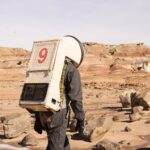
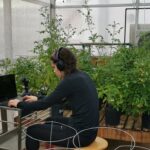
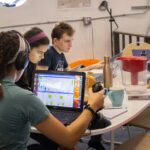
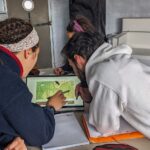
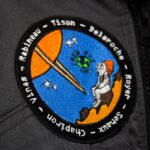

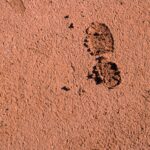
You must be logged in to post a comment.